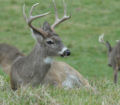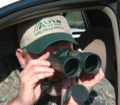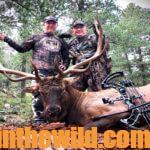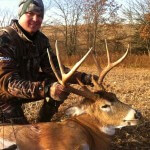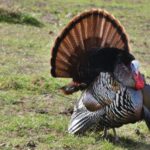Editor’s Note: If you saw your cousin, your brother, your sister, your uncle and your aunt get run over by an 18-wheeler every time one of them tried to cross a six-lane interstate, then you probably wouldn’t attempt to cross that interstate yourself. Just like you’d learn not to play in traffic from observing what happened to your family on the interstate, older bucks with large racks and heavy body weights learned at an early age that if they went into a green field during hunting season in the daytime, more than likely they never would leave the green field. But most hunters plant green fields to grow bigger bucks and think they’ll bag them at the green fields. Here’s the reality –the mature bucks will become nocturnal first. Because younger bucks haven’t learned the danger that awaits them in the green fields, hunters who sit in shooting houses over green fields have noticed they generally take smaller, younger bucks than hunters do in stands 50- to 200-yards away from those green fields. Now scientific evidence proves the truth of this assumption.
 Through radio telemetry, wildlife biologist and researcher Dr. Grant Woods and his team have reinforced what outdoorsmen already have known – that deer actively avoid hunters. For instance, the research shows that deer will gravitate toward a food plot not hunted and avoid an intensively-hunted food plot. With two food plots producing equal amounts of food and located 1/4-mile away from each other, the food plot with the least amount of hunting pressure consistently will have the most deer on it.
Through radio telemetry, wildlife biologist and researcher Dr. Grant Woods and his team have reinforced what outdoorsmen already have known – that deer actively avoid hunters. For instance, the research shows that deer will gravitate toward a food plot not hunted and avoid an intensively-hunted food plot. With two food plots producing equal amounts of food and located 1/4-mile away from each other, the food plot with the least amount of hunting pressure consistently will have the most deer on it.
“Deer seem to do an extremely-effective job of patterning hunters,” Woods emphasizes.
“I believe that today’s hunters for the most part are no longer predators as we once were, but we instead have become observers. When you go to a football or a baseball game, you’re an observer. Many deer hunters today think they’re at a sporting event. They want to sit over a green field and watch to see what happens. They’re not making things happen, because they’re not hunting like predators.
“Think about the way a mountain lion, which is the best deer predator, hunts. A mountain lion spends a lot of time laying beside a trail and waiting, but he also scouts. His nose is always in the wind, and the lion takes full advantage of shadows and shade, camouflaging himself so that he can take deer, and moving very quietly and slowly when he stalks. A mountain lion never sits on the side of a green field waiting for a deer to come out.”
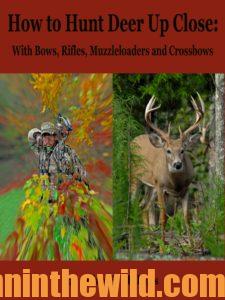 To learn more about hunting deer, check out John E. Phillips’ book, “How to Hunt Deeer Up Close with Bows, Muzzleloaders and Crossbows” at https://www.amazon.com/dp/B00A2A6ZG6 that’s available in Kindle, print, Nook and audio versions.
To learn more about hunting deer, check out John E. Phillips’ book, “How to Hunt Deeer Up Close with Bows, Muzzleloaders and Crossbows” at https://www.amazon.com/dp/B00A2A6ZG6 that’s available in Kindle, print, Nook and audio versions.

